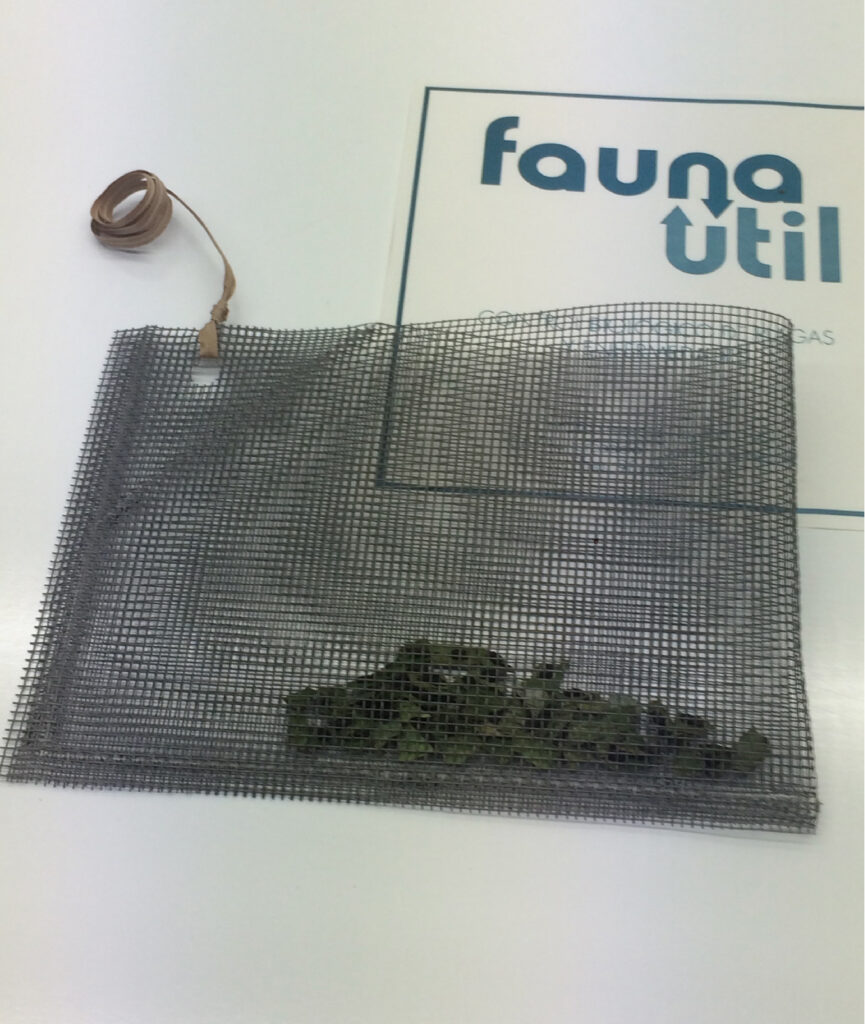Control of the eucalyptus
defoliator weevil
plague symptoms
Damage and diagnostic items
Gonipterus platensis causes damage to eucalyptus both in adult and larval. As a consequence of its attack, the growth of the trees in height and diameter is reduced, and may even cause their death.
- The first larval instars damage the leaf epidermis, leaving galleries where they pass.
- Advanced larval stages damage the entire leaf blade, shoots, and twigs.
- Adults feed on the edge of the leaves, leaving them with a scalloped appearance, although they can also attack the apical shoots and flower buds.
Plague cycle
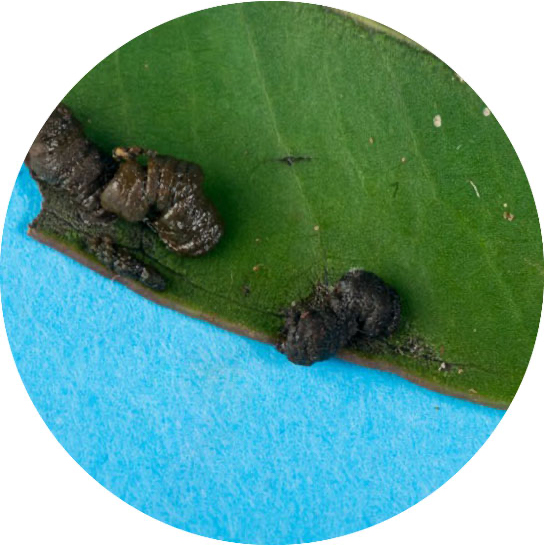
EGG
It is bright yellow in color and its length is approximately 1 mm. They are grouped between 6-12 wrapped in a blackish-brown protective cover, which is known as the ootheca or egg-laying, and which generally appears on the upper surface of the leaves.
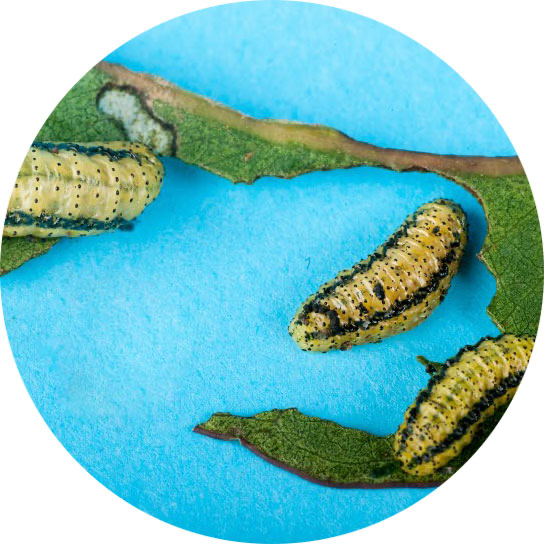
LARVA
It has 4 larval stages that range between 1.5-12 mm and last between 30-40 days. In the first instars it is yellow with black dots along the body and two longitudinal black bands in the more advanced instars. When mature it is buried in the ground, where it will remain for 20-30 days to become an adult.
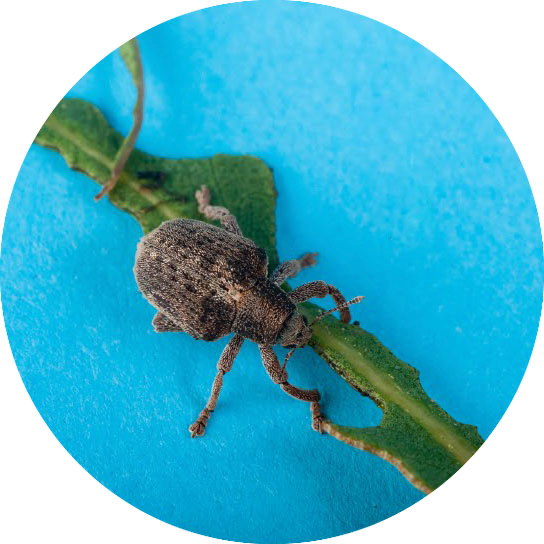
ADULT
It measures between 7 and 9 mm. Their coloration ranges from dark brown when young to brown when old.
After they are born they go through a period of sexual maturation of one month before they are spawned.
Biological pest control
Biological control of the eucalyptus defoliator weevil is based on the use of its natural enemy, the parasitoid Anaphes nitens, a small wasp of about 2 mm that develops inside the clutches of Gonipterus platensis, breaking the biological cycle of the pest. This biological treatment has excellent results because Anaphes nitens guarantees an excellent adaptation to different climatic conditions and is very prolific in its reproduction.
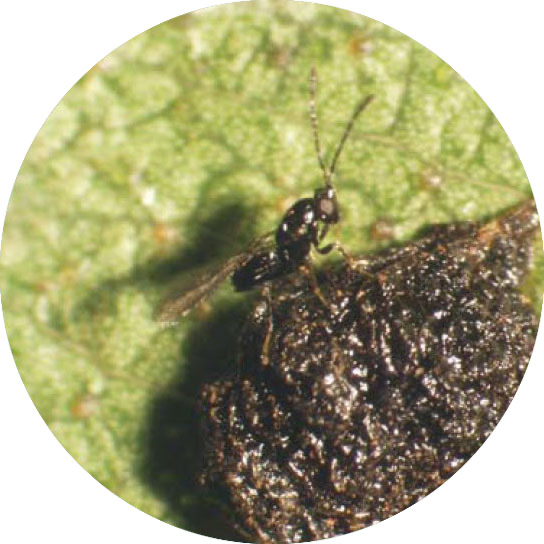
PARASITING
Anaphes nitens lays its eggs inside weevil clutches. There the larvae feed on the embryo of their prey, so that each egg will hatch a parasitoid instead of a Gonipterus platensis larva.

SUELTA
Oothecae parasitized in the laboratory are introduced into mesh bags that hang from the eucalyptus trees. Once the incubation of the new Anaphes nitens is complete, they come out through the holes in the mesh to look for new clutches to parasitize.
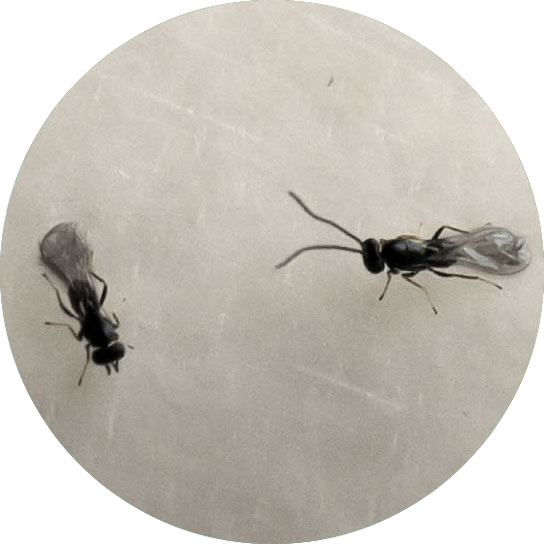
TRATAMIENTO
• The recommended treatment dose is 50 clutches/hectare.
• The release must be done when the eggs are detected, in spring and autumn.
• Its effectiveness will depend on the degree of attack of the pest on the affected mount.
Calendario del tratamiento

At Fauna Útil we provide ootheca of Gonipterus platensis parasitized by Anaphes nitens in bulk or in mesh bags for be hung in the affected eucalyptus and that the parasitoids leave after hatching to locate new clutches to parasitize.
Bulk ootheques
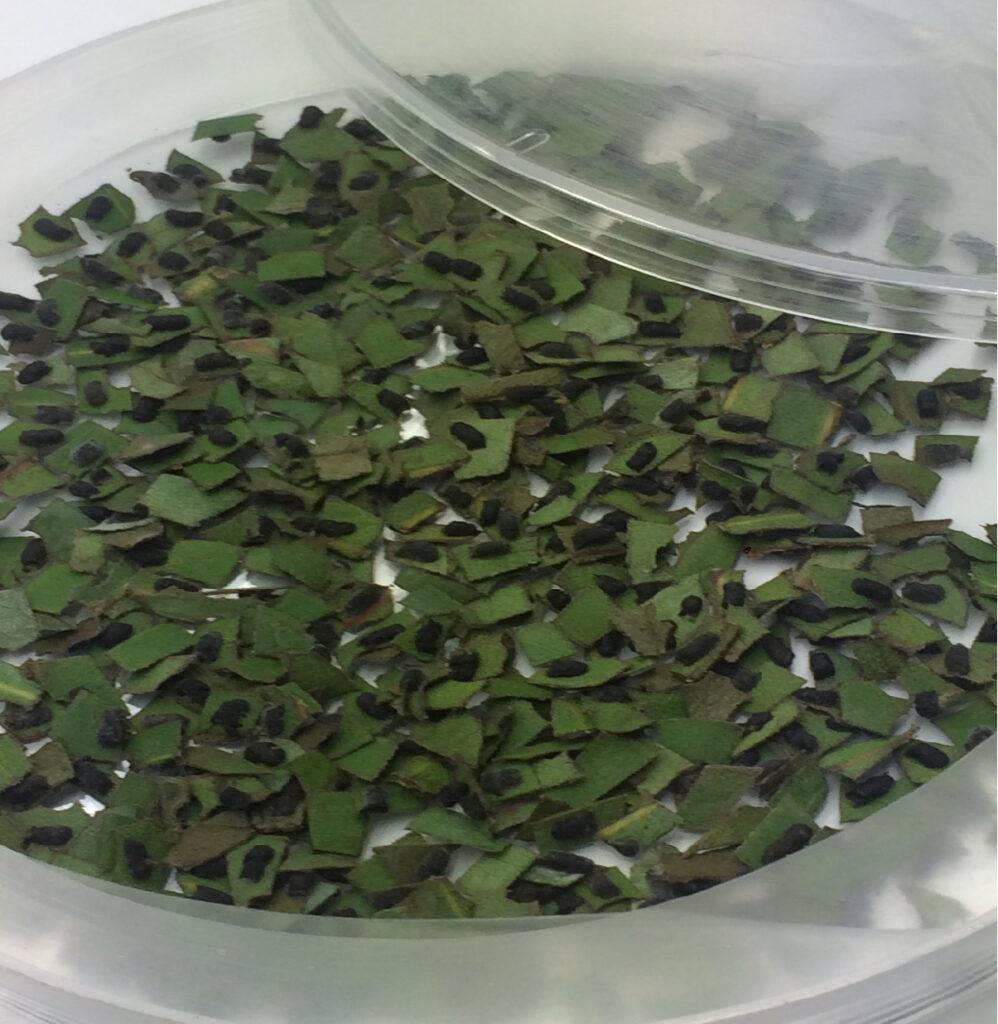
Ootheca in mesh bag
